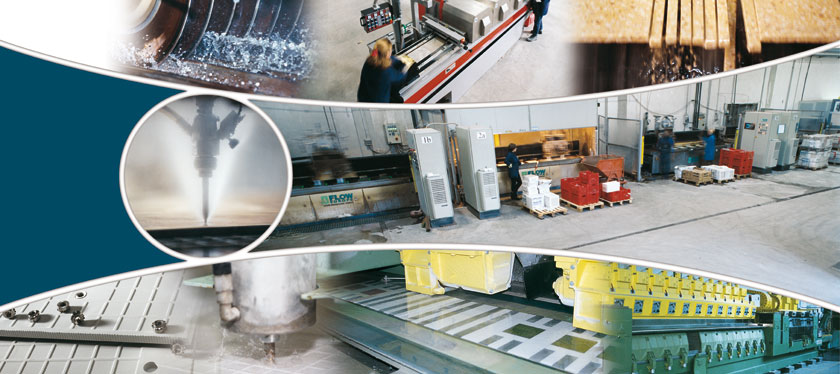Hydrodesign, technology and innovation
Hydrodesign was founded in 1994, in the district of Sassuolo, with the aim of creating innovation in the decoration of ceramic products by using high pressure water jet cutting equipment; a technology born in U.S.A. in 1974 and exploited in the field of aerospace. In the year 2000, Hydrodesign continued its research in the application of working techniques of natural stones, and invested a great amount of resources in the project ”fuga zero”; a production process that allows us to obtain decorative elements in one single piece by using traditional cutting and \ or water jet method.
Hydrodesign has now implemented its production with various multiblade cutting systems for the production of linear cuts, satisfying requests for the production of mosaics by using automated systems for mosaic assembling. Hydrodesign has been present in Spain since 1998 catering for Spanish ceramics, and in January 2014 continued its expansion with the opening of a plant in the U.S.A.
These different technologies are used for decoration in the ceramic field and for natural and artificial materials for different sectors:
- The first caters for industrial and repetitive projects, such as borders, medallions, mosaics and modules; ornaments that can be produced in large quantities with specific "multihead" machines that allow you to reduce production costs and be competitive on the market
- The second for designers who wish to create floors with customized decorative composition and color effects
As all materials are easily worked by using high pressure water system, and owing to the continuous research for novelties, we are now using as an alternative to natural stone, inserts of various types, such as steel, wood and glass, realizing refined and exclusive creations. Experience tells us that the basis of the future of the ceramic tile decoration lies on one hand in the recovery and interpretation of antique decorating techniques, attempting to transform them in industrialized processes and on the other hand by trying to interpret the manipulation techniques used in the past on these materials to obtain with modern technology effects of the olden days.




